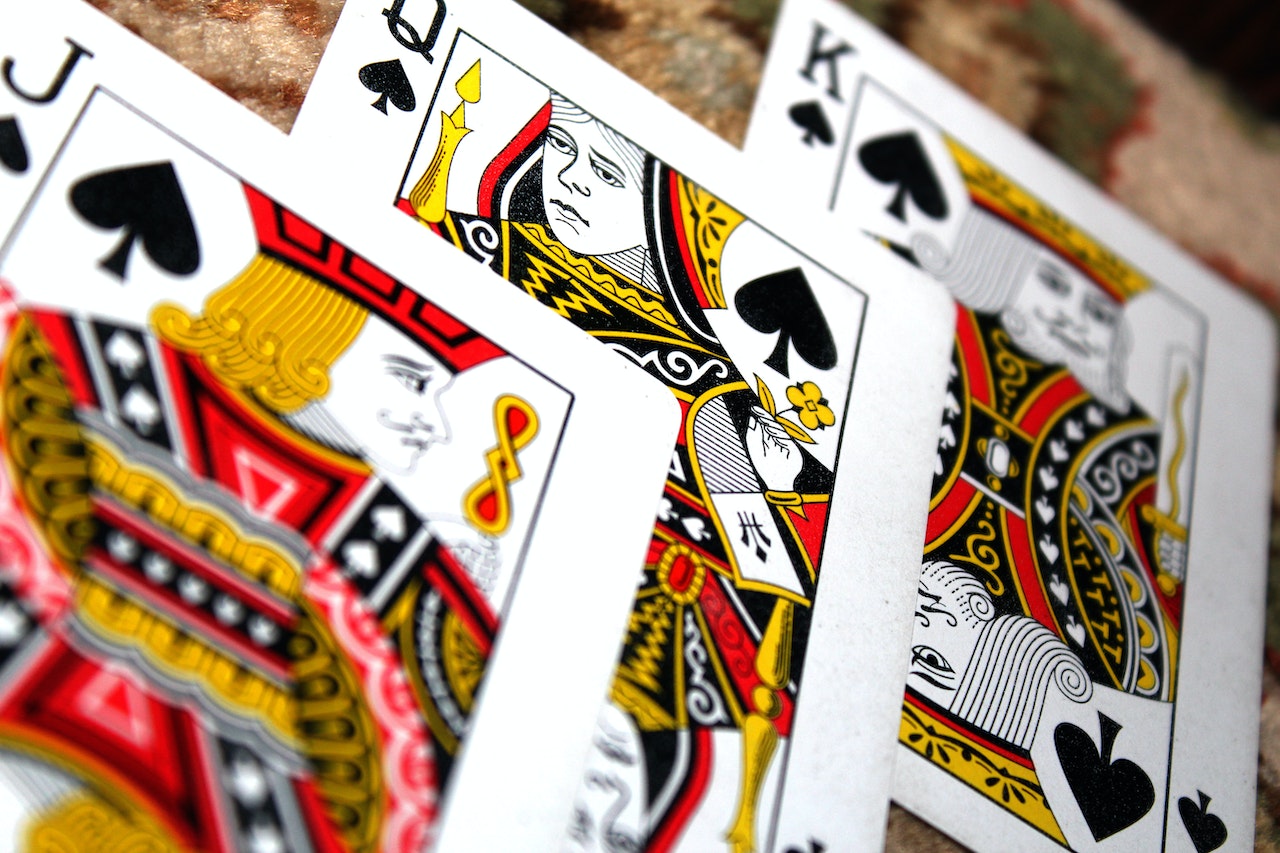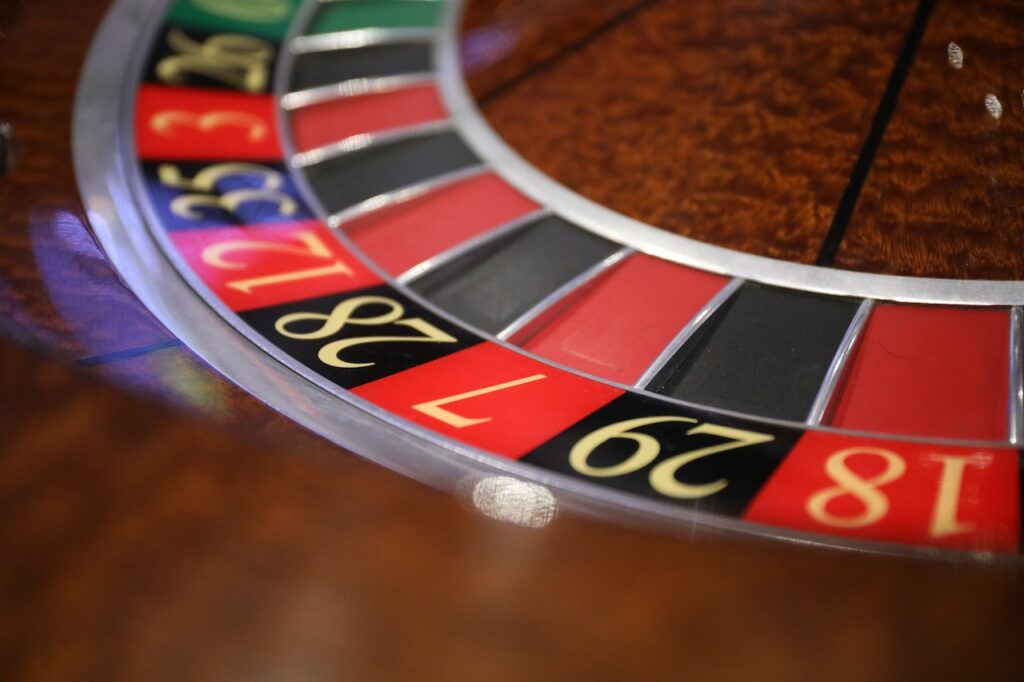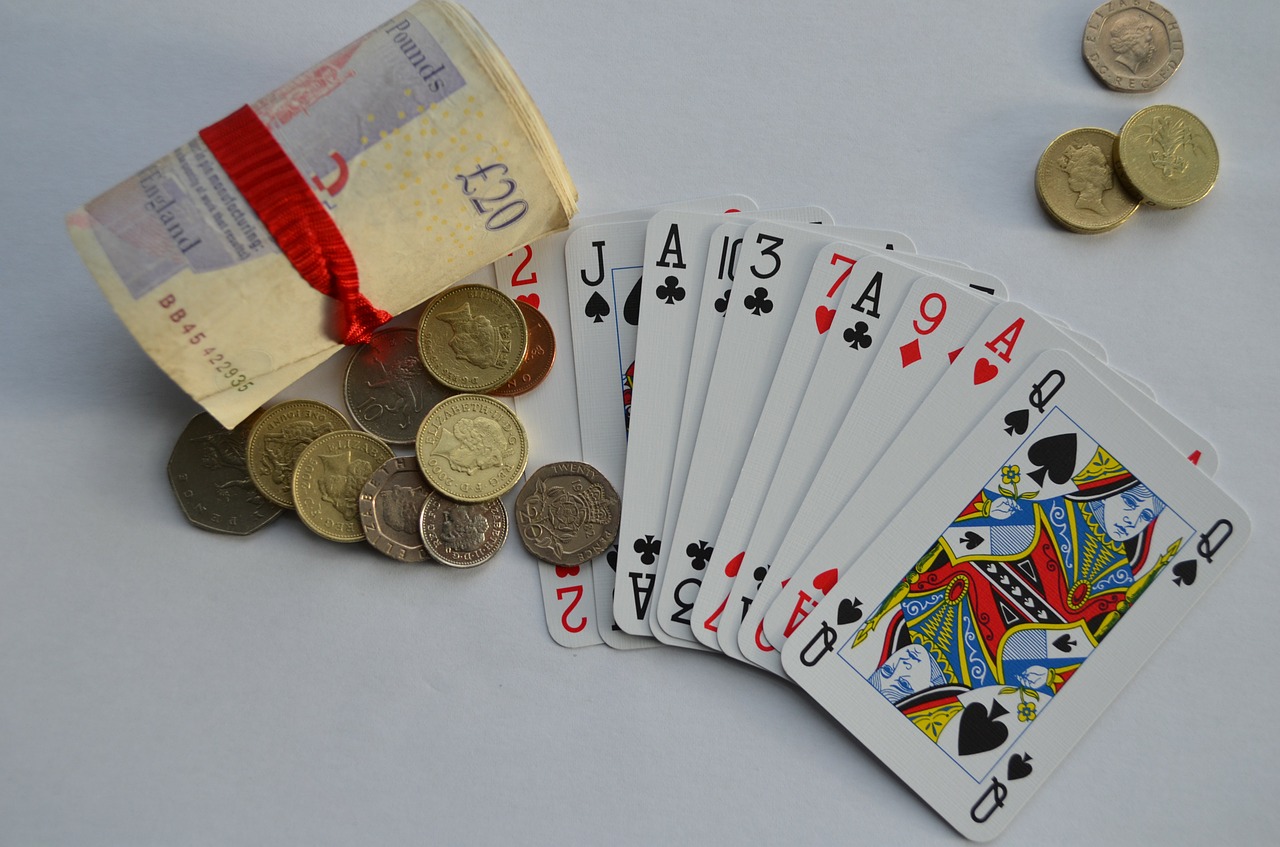Introduction
In the exhilarating game of poker, developing a well-rounded and effective strategy is crucial for success. Whether you’re a beginner, an intermediate player looking to improve, or an experienced pro seeking to refine your skills, understanding and honing your poker game strategy is essential. This article will provide you with valuable insights and guidance on how to develop and enhance your poker strategy. From grasping the fundamental concepts to mastering advanced techniques such as hand selection, bet sizing, reading opponents, and bluffing, we will explore key aspects that will empower you to make strategic decisions at the poker table. Additionally, we will delve into the importance of mental fortitude, emotional control, and the continuous review and adjustment of your strategy. Let’s embark on this journey together and unlock the secrets to taking your poker game to the next level.
1. Understanding the Basics of Poker Strategy
Fundamental Concepts
Poker is more than just a game of luck; it requires strategy and skill to come out on top. Understanding the fundamental concepts of poker strategy is essential for improving your game. These concepts include things like pot odds, implied odds, and expected value. Don’t worry if these terms sound intimidating—you don’t need a Ph.D. in mathematics to grasp them. With a bit of practice, you’ll be calculating your odds like a pro.
Importance of Position
In poker, position is everything. Playing in position means you act after your opponents, giving you a significant advantage. It allows you to gather information about their moves and make more informed decisions. On the other hand, playing out of position can feel a bit like driving without a GPS—blindly navigating the game. So, if you have a choice, always strive to play from late positions to maximize your chances of success.
Starting Hand Selection
There’s a saying in poker: “You can’t win the game in the first hand, but you can definitely lose it.” Choosing the right starting hands sets the tone for your entire game. While it’s tempting to play every hand and see where the chips fall, a wise player knows when to fold and wait for the right cards. Focus on playing strong hands, like pocket pairs and suited connectors, while folding weak hands like 7-2 offsuit—it’s not as fun as it sounds, trust me.
2. Analyzing Different Poker Playing Styles
Aggressive vs. Passive Styles
When it comes to playing poker, you can be as timid as a turtle or as fierce as a lion. Aggressive players put pressure on their opponents by betting and raising frequently. Passive players, on the other hand, prefer a more cautious approach, frequently calling and rarely raising. Each style has its pros and cons, so find the one that suits your personality and adapt it to different situations on the felt.
Tight vs. Loose Styles
Tight or loose? It’s not a reference to your favorite pair of jeans but rather your playing style. Tight players are highly selective with their hand choices, waiting for strong hands before getting involved in pots. Loose players, on the other hand, play a wider range of hands, taking more risks. Like a pair of pants, finding the right fit is crucial. Experiment with both styles to find your comfort zone.
Identifying Opponents’ Playing Styles
One of the keys to success in poker is being able to read your opponents and adjust your strategy accordingly. Look for clues in their betting patterns, body language, and even the way they stack their chips. Are they tight or loose? Aggressive or passive? By discerning their playing style, you can exploit their weaknesses and make better decisions at the table. Just remember, poker isn’t just a game of cards—it’s a game of people.
3. Mastering the Art of Hand Selection
The Importance of Hand Ranges
Gone are the days of playing the same hand in the same way every time. To take your poker game to the next level, learn to think in terms of hand ranges. A hand range is the set of possible hands your opponent could have at any given moment. By narrowing down their likely range, you can make more accurate decisions based on the strength of your own hand. Think of it as Sherlock Holmes deducing the villain’s next move—minus the pipe and deerstalker hat.
Playing Premium and Marginal Hands
Not all hands are created equal in poker. Premium hands like pocket aces and kings are the crown jewels of your arsenal. Play these hands aggressively and extract maximum value. Marginal hands, on the other hand, require more caution. They can go either way depending on the circumstances. Use your judgment, weigh the risks, and remember: sometimes it’s better to fold and live to fight another day.
Fold Equity and Adjusting Hand Selection
Fold equity—a fancy term for the power of making your opponents fold—can be a game-changer in poker. It’s the secret sauce to forcing your opponents to sweat and surrender their chips. By understanding fold equity, you can adjust your hand selection accordingly. Instead of playing only premium hands, you can include some weaker hands that have the potential to win through clever tactics and intimidation. It’s like having a hidden ace up your sleeve—figuratively, of course.
4. Developing Effective Bet Sizing and Positioning
Understanding Bet Sizing Strategies
If you’ve ever played with someone who bets a mountain of chips only to have a mouse-sized hand, you’ve witnessed poor bet sizing in action. Bet sizing is an art that requires balance. Bet too small, and you won’t scare your opponents away. Bet too big, and you risk scaring them into folding. The key is to find that sweet spot where your bets accomplish their intended purpose—whether it’s extracting value or bluffing your way to victory.
Value Betting and Extracting Maximum Value
Value betting is like chocolate frosting on a cake—it adds that extra layer of sweetness to your poker game. It involves making bets that are likely to be called by worse hands, maximizing your expected value. Learn to recognize situations where your hand is strong enough to warrant a value bet and take advantage of them. Just be careful not to get too greedy; you don’t want to scare away potential callers like a kid who eats all the frosting straight from the can.
Positional Advantage in Bet Sizing
Position in poker is like having a backstage pass to a concert—it has its privileges. When it comes to bet sizing, being in position allows you to control the flow of the action. You can make smaller bets when out of position and larger bets when in position, keeping your opponents guessing and putting them under pressure. Like a skilled magician, use your positional advantage to manipulate the pot size and keep your opponents on their toes. It’s all part of the grand performance that is poker.
How to Develop Your Poker Game Strategy
5. Utilizing Poker Tells and Reading Your Opponents
Poker tells can give you valuable insights into your opponents’ hands, and mastering the art of reading them can take your game to the next level. Some common tells to look out for include trembling hands when holding a strong hand or exaggerated sighs when feeling weak. Remember, your opponents might also be trying to deceive you, so take these cues with a pinch of salt.
Decoding Verbal and Non-Verbal Cues
Verbal and non-verbal cues can reveal a lot about your opponents’ intentions. Listen closely for any hesitant or confident tone of voice, which may indicate strength or weakness. Watch for body language, such as fidgeting or avoiding eye contact, which could be a sign of nervousness or dishonesty. Combining these observations with the context of the game can help you make better-informed decisions.
Adjusting Your Strategy Based on Tells
Once you’ve identified a reliable tell, it’s essential to adjust your strategy accordingly. Exploit your opponents’ weaknesses by betting aggressively when they show signs of weakness and adopting a more cautious approach when they display strength. Remember, though, that tells can sometimes be misleading, so always gather as much information as possible before making your move.
6. Implementing Effective Bluffing and Semi-Bluffing Techniques
Bluffing is an art form that can make or break your poker game. It involves convincing your opponents that you have a stronger hand than you actually do. Bluffing should be used strategically and sparingly to keep your opponents guessing.
Bluffing as a Strategic Tool
Bluffing can help you win pots even when you don’t have the best hand. Use it strategically to add an element of unpredictability to your game and keep your opponents off balance. However, be mindful of the table dynamics and the tendencies of your opponents; choose your bluffing spots wisely.
Identifying Optimal Bluffing Opportunities
Look for situations where the community cards on the table allow for a believable strong hand. Bluffing is most effective when the board doesn’t offer obvious winning combinations. Additionally, consider your opponents’ tendencies and whether they are likely to fold to a bluff.
Semi-Bluffing and Balancing Your Range
Semi-bluffing involves betting with a hand that has the potential to improve in later rounds. This can put pressure on your opponents and increase your chances of winning the pot, even if you don’t hit your desired card immediately. Balancing your range between strong hands and semi-bluffs makes it difficult for your opponents to read your intentions and exploit your strategy.
7. Building a Strong Mental Game and Emotional Control
In poker, keeping a strong mental game and emotional control are just as crucial as mastering the technical aspects of the game. Maintaining composure under pressure can help you make rational decisions and avoid costly mistakes.
The Importance of Emotional Stability
Emotional stability is essential in poker to prevent impulsive, emotionally-driven decisions. Stay calm and composed, even when facing challenging situations. Don’t let a bad beat or a string of losses affect your judgment. Remember, poker is a game of skill and patience.
Developing Resilience to Variance
Variance is an inherent part of poker, and accepting its ups and downs is crucial for long-term success. Don’t let short-term results cloud your judgment or discourage you. Focus on making the right decisions based on probability and expected value, and the long-term results will follow.
Staying Focused and Avoiding Tilt
Tilt refers to a state of emotional frustration that can negatively impact your decision-making. When on tilt, players tend to make irrational and impulsive moves, leading to significant losses. Take breaks when needed, practice relaxation techniques, and always stay focused on playing your best game.
8. Reviewing and Adjusting Your Poker Strategy
A poker strategy is never set in stone. It’s essential to review and adjust your approach to adapt to different opponents, game formats, and stakes.
Keeping Track of Your Performance
Maintain a record of your wins, losses, and important hands. This data will provide insights into your performance and help you identify patterns or areas for improvement. Use poker tracking software or simply keep a journal to record important information.
Analyzing and Learning from Your Mistakes
Mistakes happen even to the best players. Use them as learning opportunities by reviewing hand histories and analyzing where you went wrong. Identify any recurring errors or leaks in your game and make a conscious effort to correct them.
Adapting to Different Game Formats and Stakes
Poker is a versatile game, and adjusting your strategy to different formats and stakes is vital. Understand the nuances of cash games, tournaments, and online play, and develop strategies tailored to each. Adapt your approach to match the skill level and tendencies of your opponents.
Remember, developing a winning poker strategy is a journey that requires practice, observation, and continuous improvement. Embrace the challenges, enjoy the game, and don’t forget to have some fun along the way!In conclusion, developing a strong poker game strategy requires a combination of knowledge, practice, and adaptability. By understanding the basics, analyzing playing styles, mastering hand selection, and utilizing effective techniques such as bet sizing, reading opponents, and bluffing, you can significantly improve your chances of success. Remember the importance of maintaining a strong mental game, learning from your mistakes, and constantly reviewing and adjusting your strategy. With dedication and perseverance, you can elevate your poker skills and become a formidable player. So, go ahead, implement these strategies, and may your future poker endeavors be filled with triumph and rewards. Good luck!
FAQ
1. How long does it take to develop a solid poker game strategy?
Developing a solid poker game strategy is a continual process that requires time and practice. The timeline can vary depending on individual factors such as dedication, previous experience, and the amount of effort put into studying and applying different strategies. It’s important to remember that improvement is gradual, and consistent practice and learning are key to developing a strong poker game strategy.
2. Is it necessary to bluff in poker?
Bluffing is a valuable tool in poker, but it is not necessary to bluff in every hand or every game. Bluffing should be used strategically and selectively, when you have a reasonable chance of convincing your opponents that your hand is stronger than it actually is. Understanding the right timing and reading your opponents’ reactions are crucial for successful bluffing. It’s important to note that bluffing carries risks and should be used judiciously based on the specific game dynamics and your opponents’ playing styles.
3. How do I adjust my poker strategy based on different opponents?
Adjusting your poker strategy based on different opponents is a vital skill. It involves observing and analyzing your opponents’ playing styles, tendencies, and behaviors. If you’re facing a tight and conservative player, you may want to loosen up your starting hand requirements and be more aggressive. On the other hand, against an aggressive player, you may need to play more selectively and look for opportunities to trap them. Adapting to different opponents requires flexibility and the ability to make strategic adjustments throughout the game to exploit their weaknesses and counter their strategies.
4. Can I rely solely on a single poker strategy?
While having a solid base strategy is important, relying solely on a single strategy may limit your success in the long run. Poker is a dynamic game that requires adaptability. Different game situations, opponents, and table dynamics will call for different approaches. It’s essential to be open to learning new strategies, experimenting with different techniques, and adjusting your game plan accordingly. Continuously evolving your poker strategy will keep you ahead of the curve and enhance your chances of consistent success.








Facebook Comments